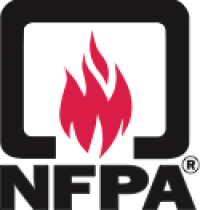December 20, 2012 – While the winter months are the leading time of year for home fires, the National Fire Protection Association (NFPA) says the post-holiday season presents its own set of fire hazards. Dried out Christmas trees and holiday lighting are among the leading culprits.
“As time goes by, Christmas trees continue to dry out and become increasingly flammable,” said Lorraine Carli, vice president of Communications for NFPA. “For trees decorated with holiday lights, the risk increases because they’re in direct contact with an electrical source.”
Although Christmas tree fires are not common, when they do occur, they have a higher chance of being deadly. On average, one of every 66 reported home structure Christmas tree fires resulted in a death compared to an average of one death per 144 total home structure fires.
According to Carli, you can tell when the tree is drying out by the number of needles that drop each day. “Once you start to see more fall, the tree is no longer fresh, and it’s time to get rid of it.”
Dried trees should not be kept in the home, garage, or placed outside against the home. Check with your local community to find a recycling program.
In 2006 to 2010, holiday lights and other decorative lighting were involved in an annual average of 160 home fires, 9 civilian deaths, 13 related injuries, and $9 million in direct property damage. To reduce the risk of holiday light fires and keep equipment in good condition for next year, follow these storage suggestions:
- To unplug electric decorations, use the gripping area provided on the plugs. Never pull the cord to unplug a device from electrical outlets. Doing so can harm the cord’s wire and insulation and even lead to an electrical shock or fire.
- As you’re putting away electrical light strings, take time to inspect each for damage. Throw out light sets if they have loose connections, broken sockets or cracked or bare wires.
- Do not place a damaged set of lights back into the storage box for next year’s use.
- Wrap each set of lights and put them in individual plastic bags, or wrap the lights around a piece of cardboard.
- Store electrical decorations in a dry place where they cannot be damaged by water or dampness. Also, keep them away from children and pets.
NFPA and the U.S. Fire Administration (USFA) have teamed up again to remind everyone about ways to keep warm and safe throughout the winter months. Their joint safety campaign, “Put a Freeze on Winter Fires,” includes a wealth of heating, cooking and holiday fire safety tips.
About the National Fire Protection Association (NFPA)
NFPA is a worldwide leader in fire, electrical, building, and life safety. The mission of the international nonprofit organization founded in 1896 is to reduce the worldwide burden of fire and other hazards on the quality of life by providing and advocating consensus codes and standards, research, training, and education. NFPA develops more than 300 codes and standards to minimize the possibility and effects of fire and other hazards. All NFPA codes and standards can be viewed at no cost at www.nfpa.org/freeaccess.











